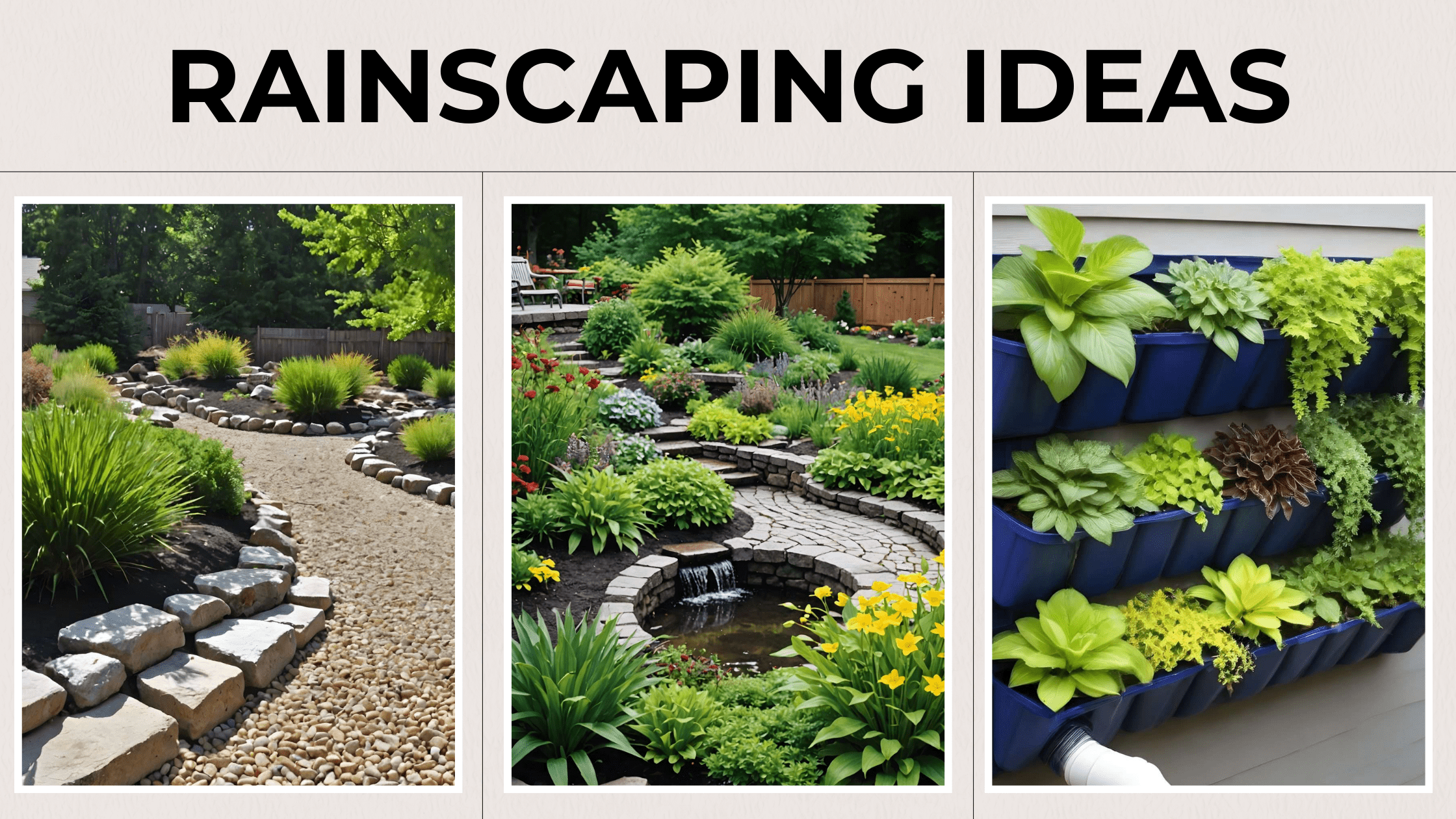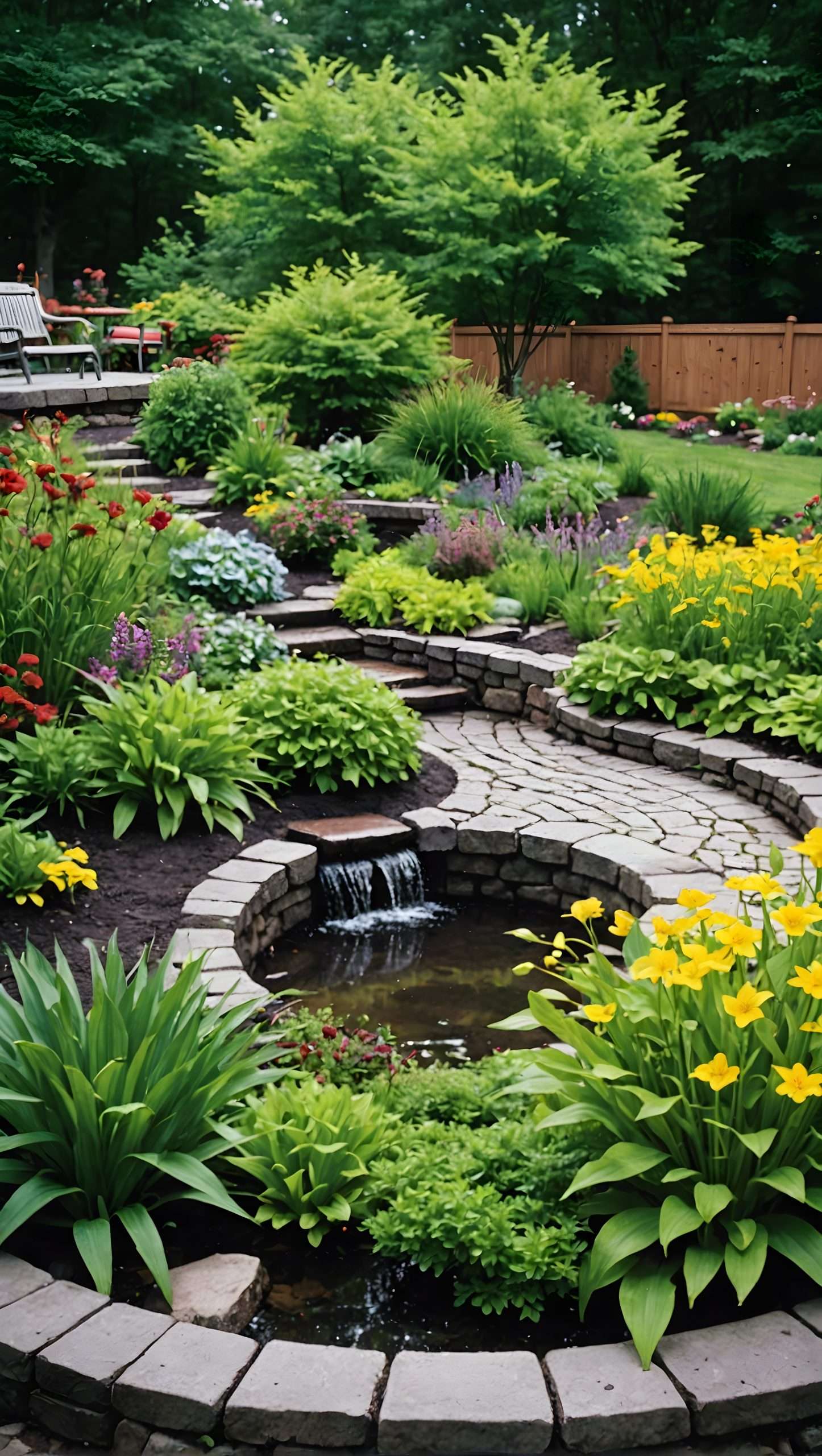Sustainability in gardening is not just a trend; it’s a necessity.
With climate change influencing weather patterns and a growing awareness of water conservation, more homeowners are exploring ways to create gardens that thrive while using water efficiently.
Rainscaping, the practice of using landscaping to manage water flows and rainfall where it falls, can help to reduce water waste, prevent runoff, reduce water pollution and support local ecosystems.
This listicle is a curated collection of innovative ideas that promise to turn your home garden into a haven of sustainability, all while adding beauty and functionality.
1. Construct a Rain Barrel System for Copious Plant Watering
Rain barrels are a simple yet effective method to harvest the rain that falls on your house or roof.
Mount a barrel near a downspout with a mesh screen to keep out debris, a lid to prevent mosquito breeding, and a spigot for easy access.
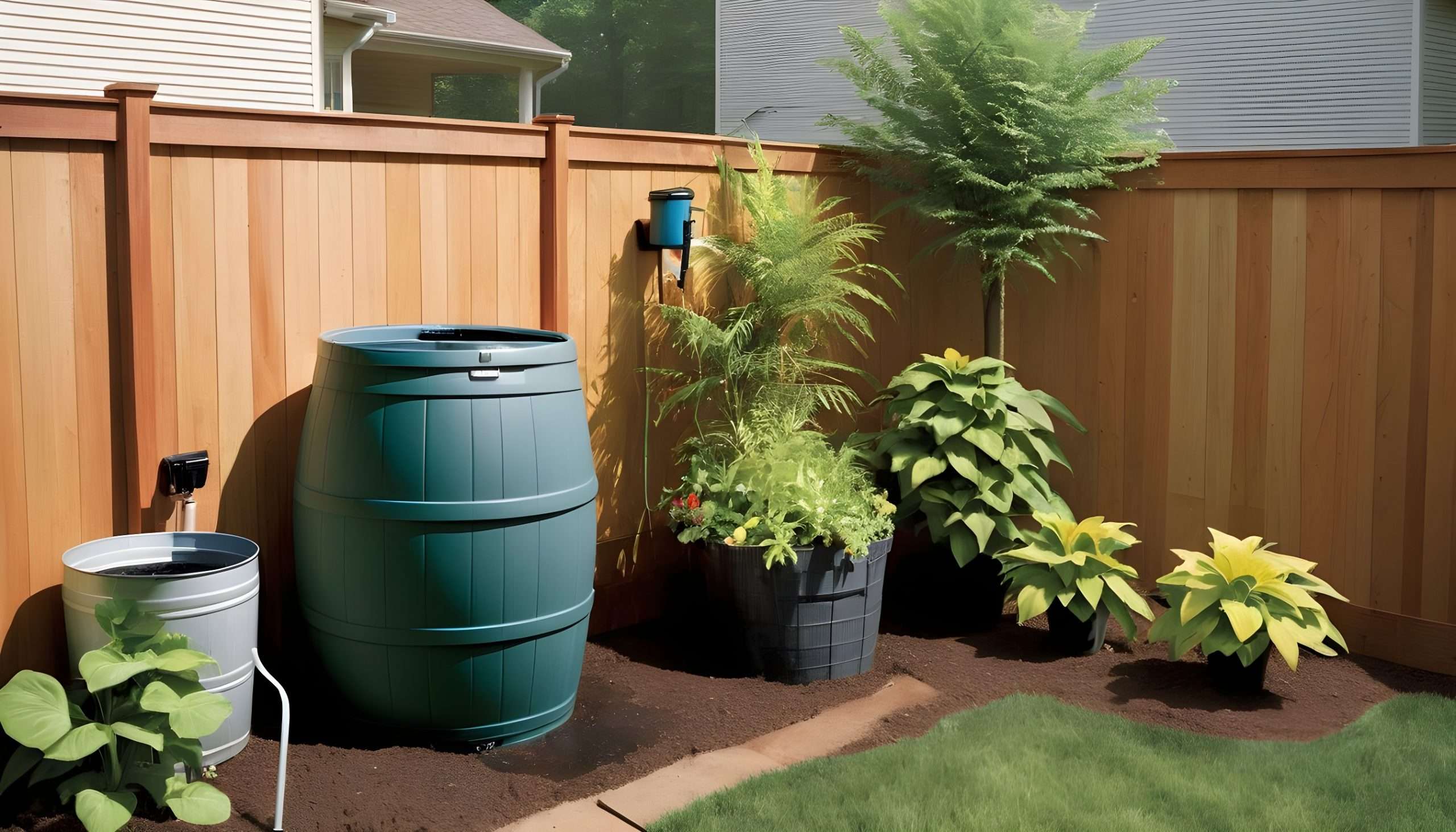
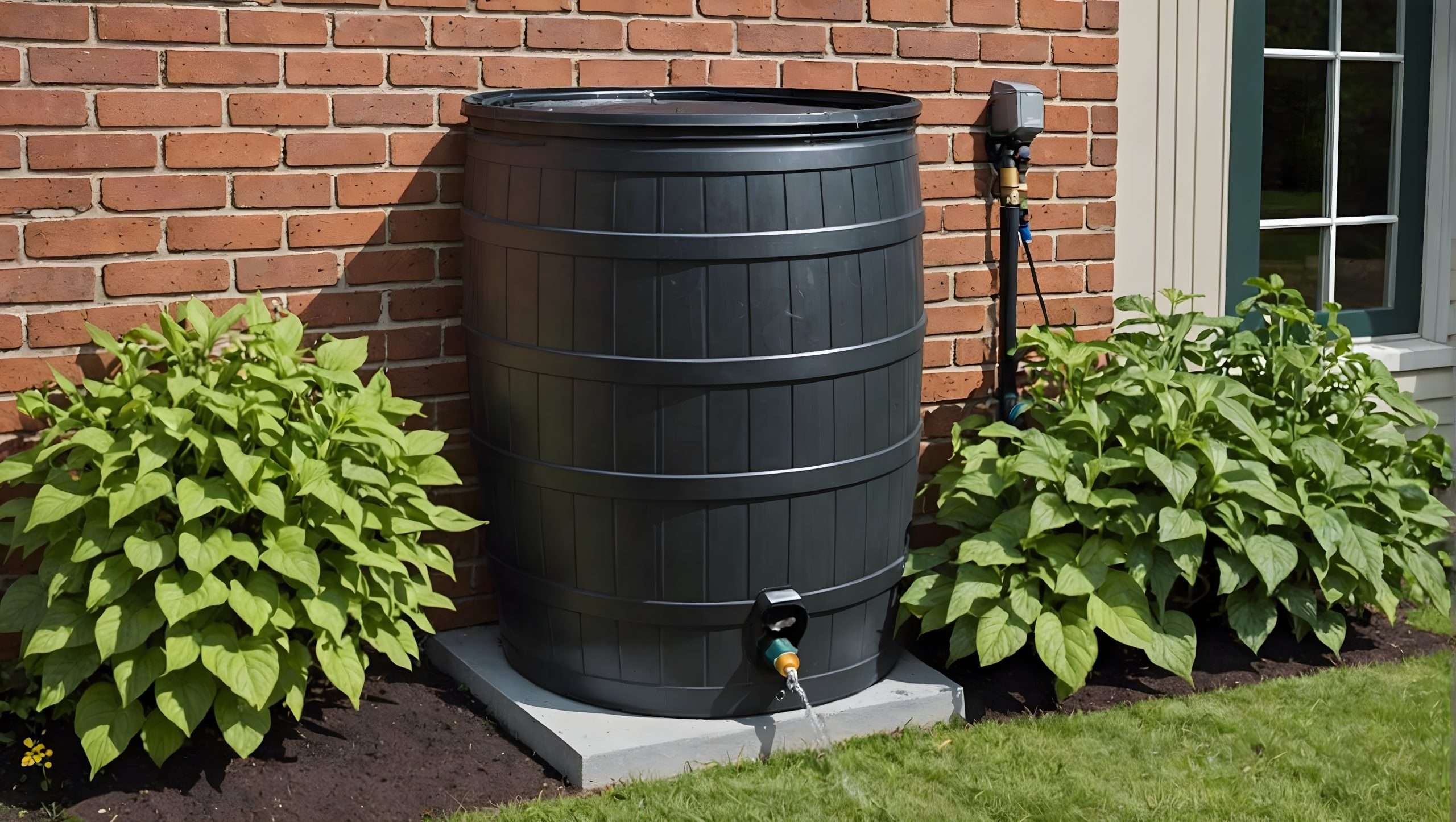
With however many barrels you can fit in your space, you’ll have a constant supply of untreated water for your garden during dry spells, reducing reliance on other water sources.
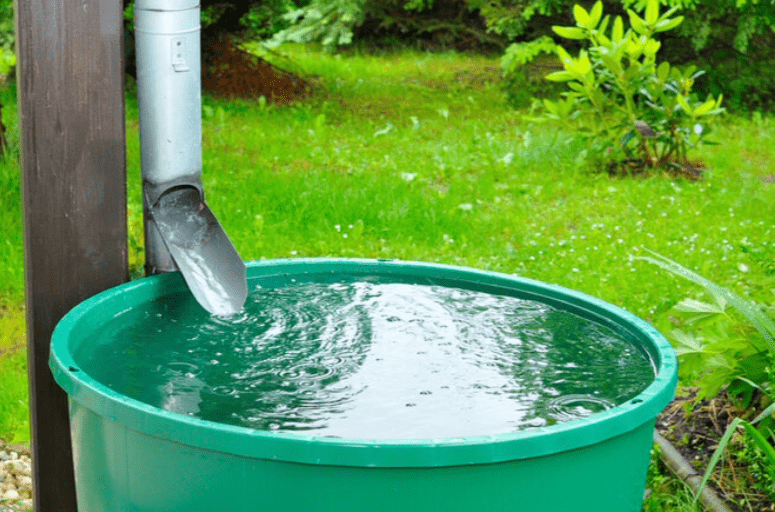
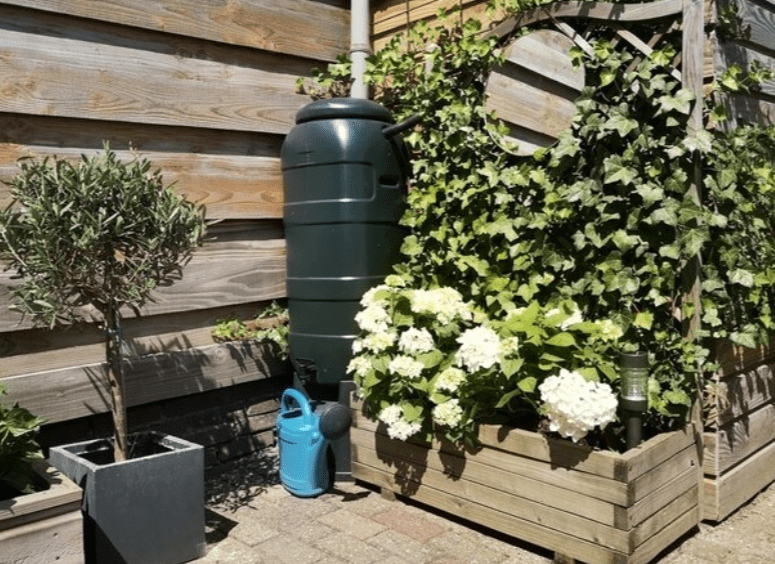
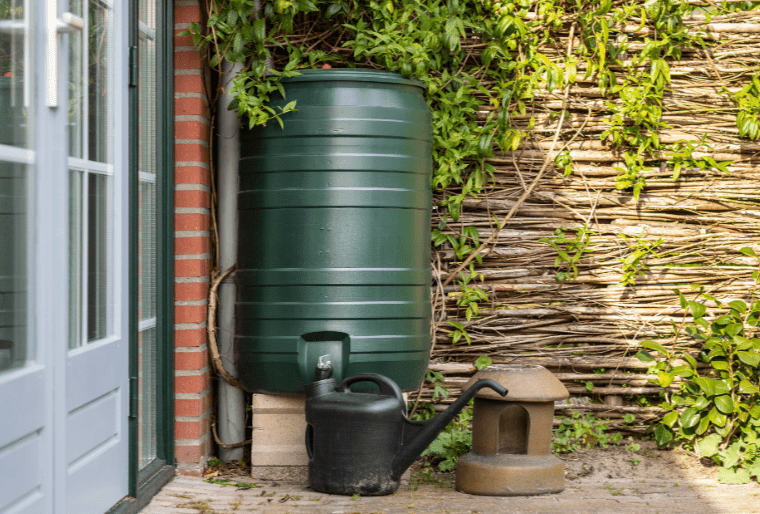
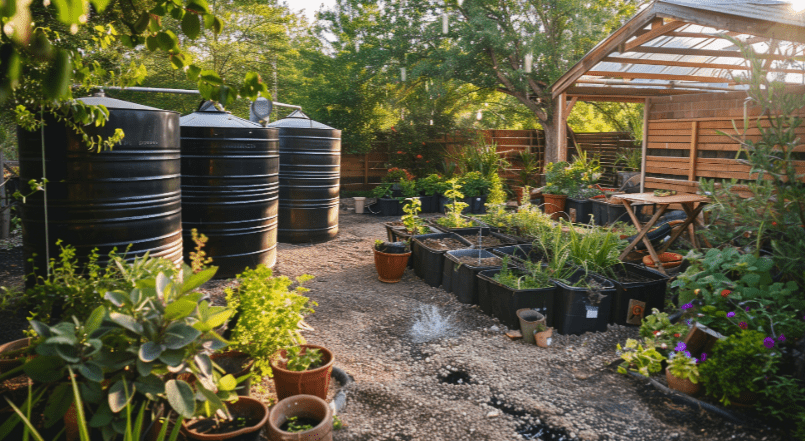
2. Add a Dry Creek Bed as a Rainwater Pathway
A dry creek bed is an attractive way to manage heavy rains and create a decorative feature when the weather is dry.
It not only diverts water away from your your home’s foundation, but also provides an interesting focal point in your garden.
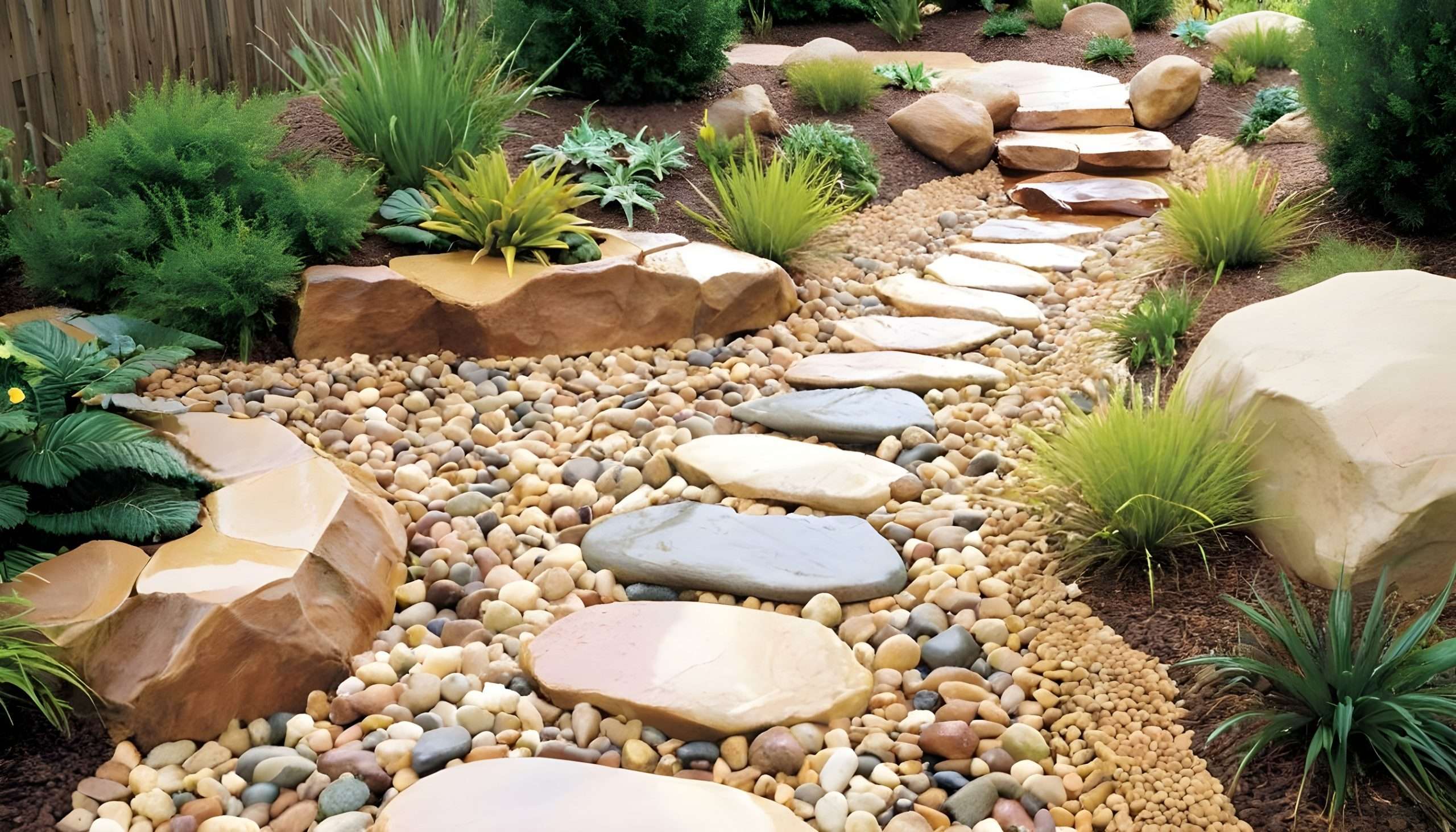
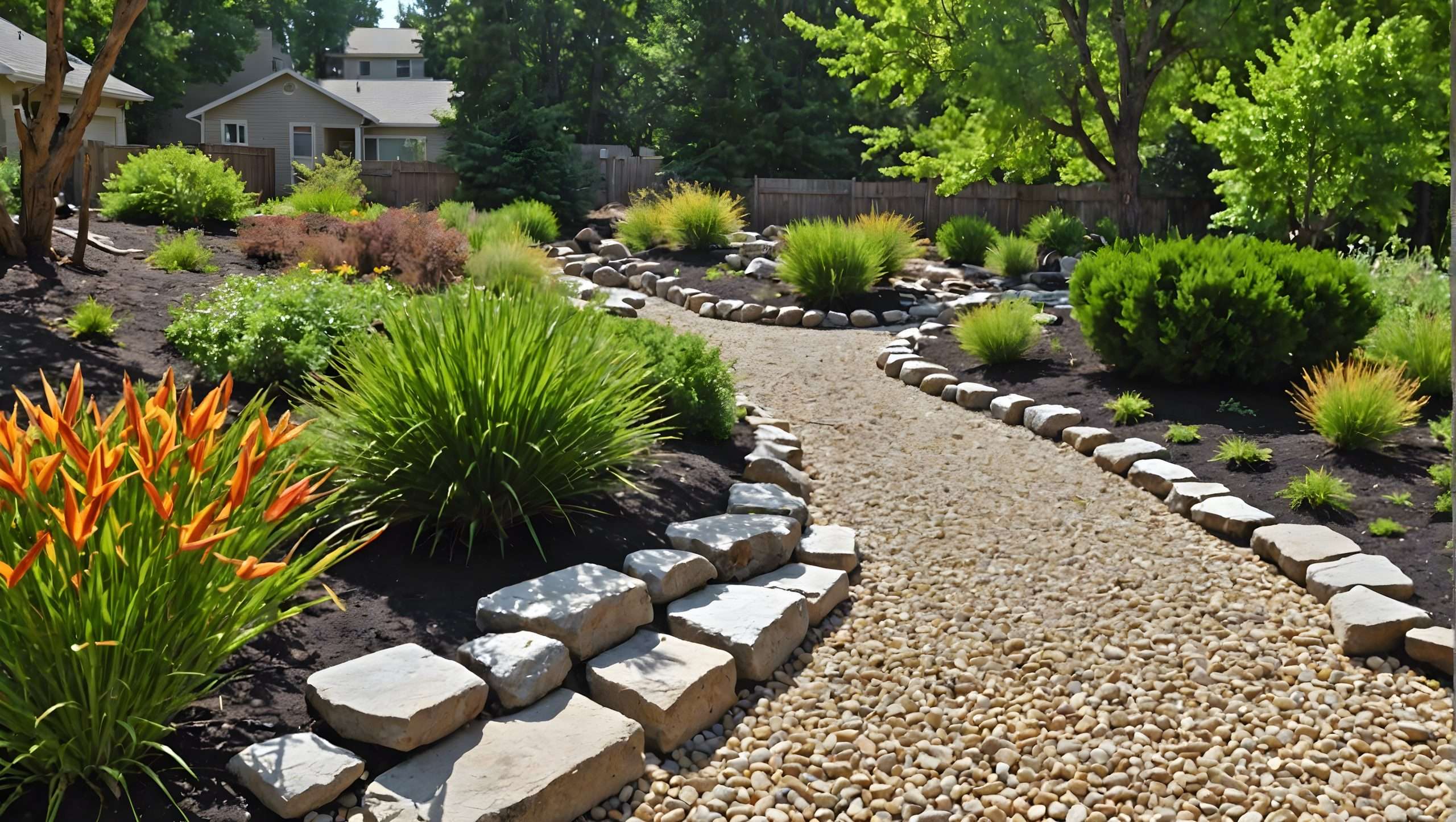
Construct with varying sizes of rocks and include deeper pools along the way to slow down and capture water for plants nearby.
You can enhance your creek bed further by lining the edges with moisture-loving plants to naturally filter the water.
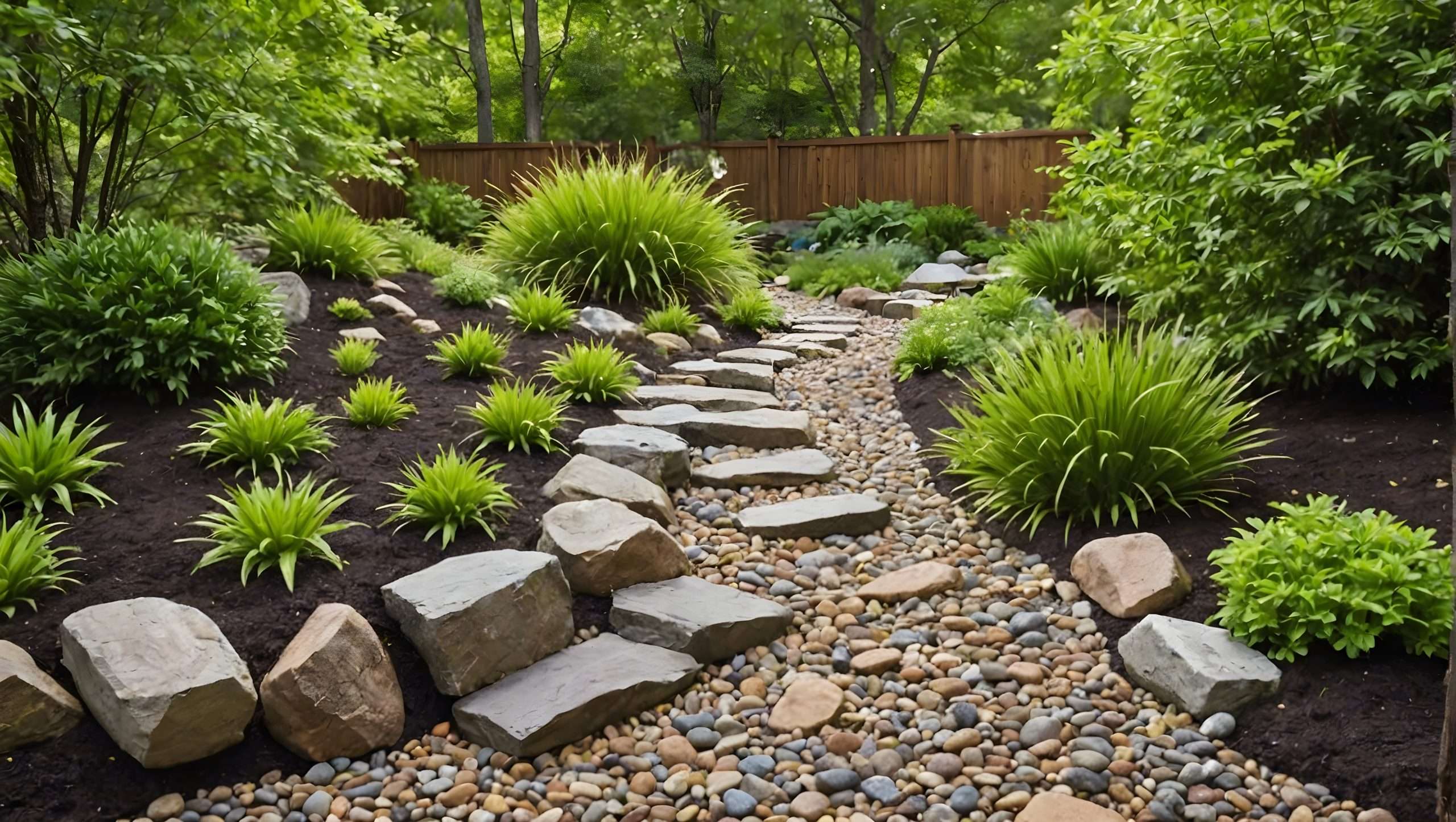
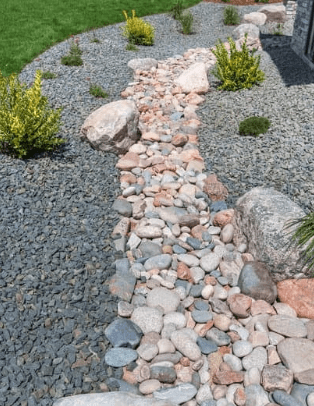
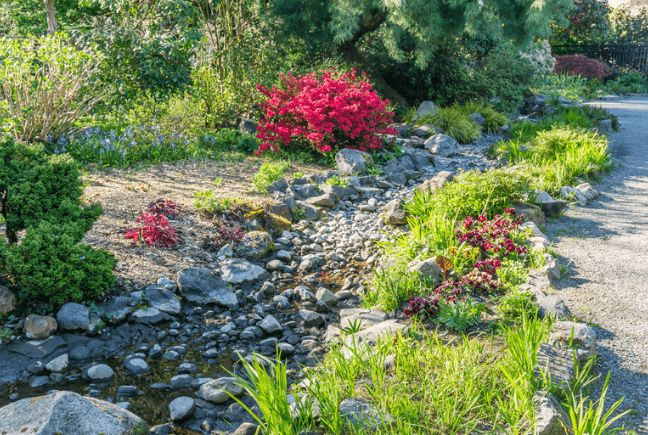
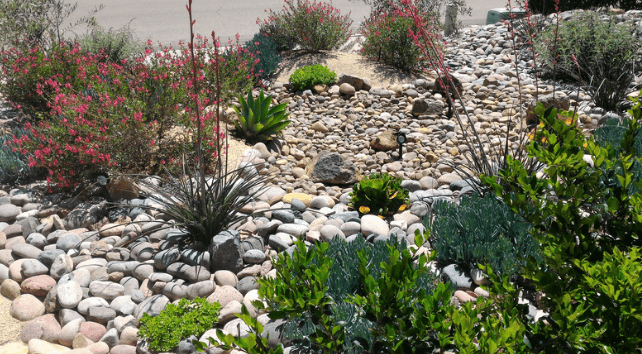
3. Install a Downspout Planter for Vertical Gardening
Downspout planters are an excellent way to utilize the rain that would otherwise stream from your roof onto the ground.
By redirecting your downspout into a planter or a series of stacked containers, you can both conserve water and grow a beautiful vertical garden.
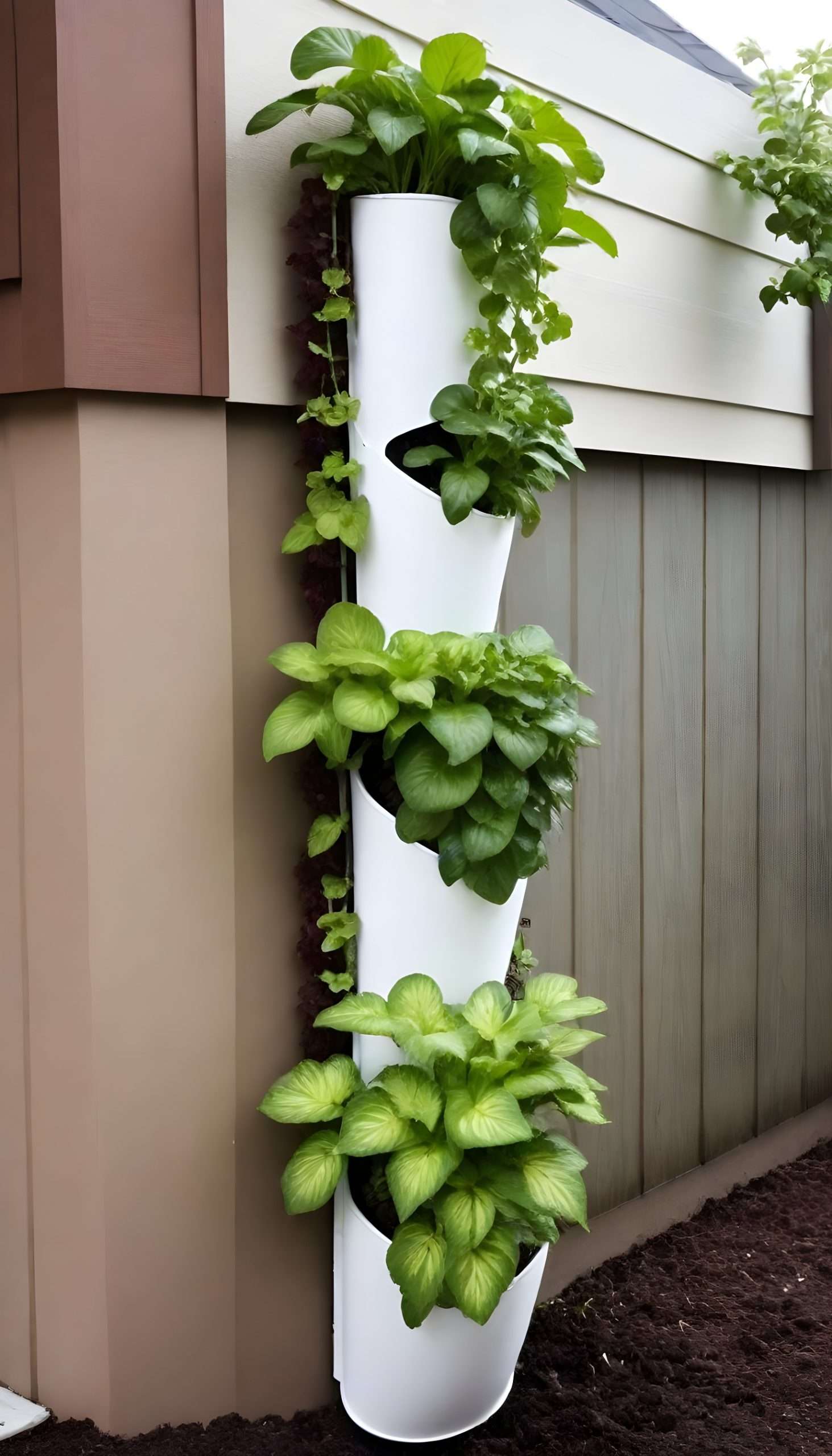
You’ll want to use a mix of plants for both sun exposure and deep root depth, and don’t forget to incorporate a layer of gravel at the bottom of your planters for drainage.
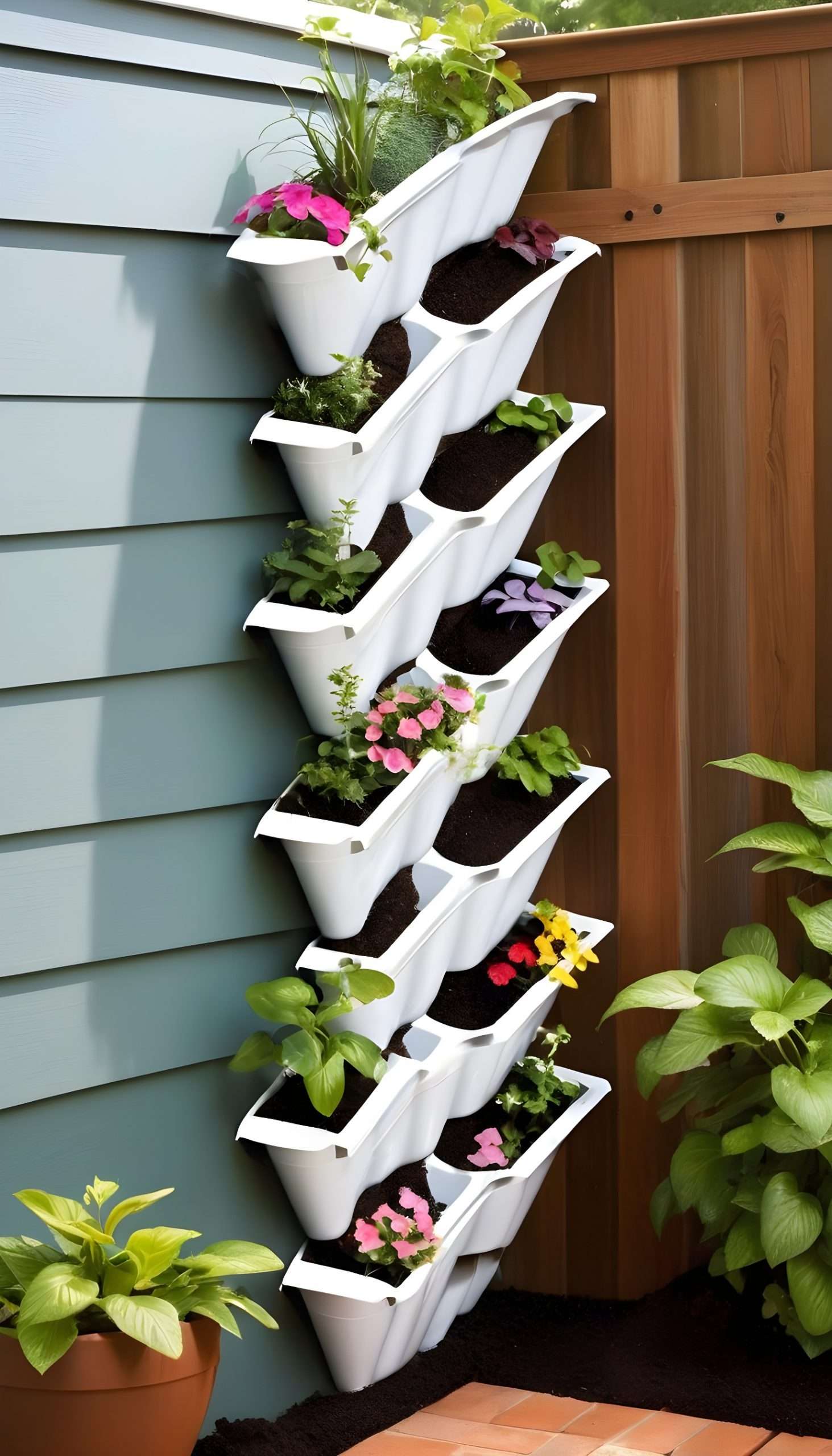
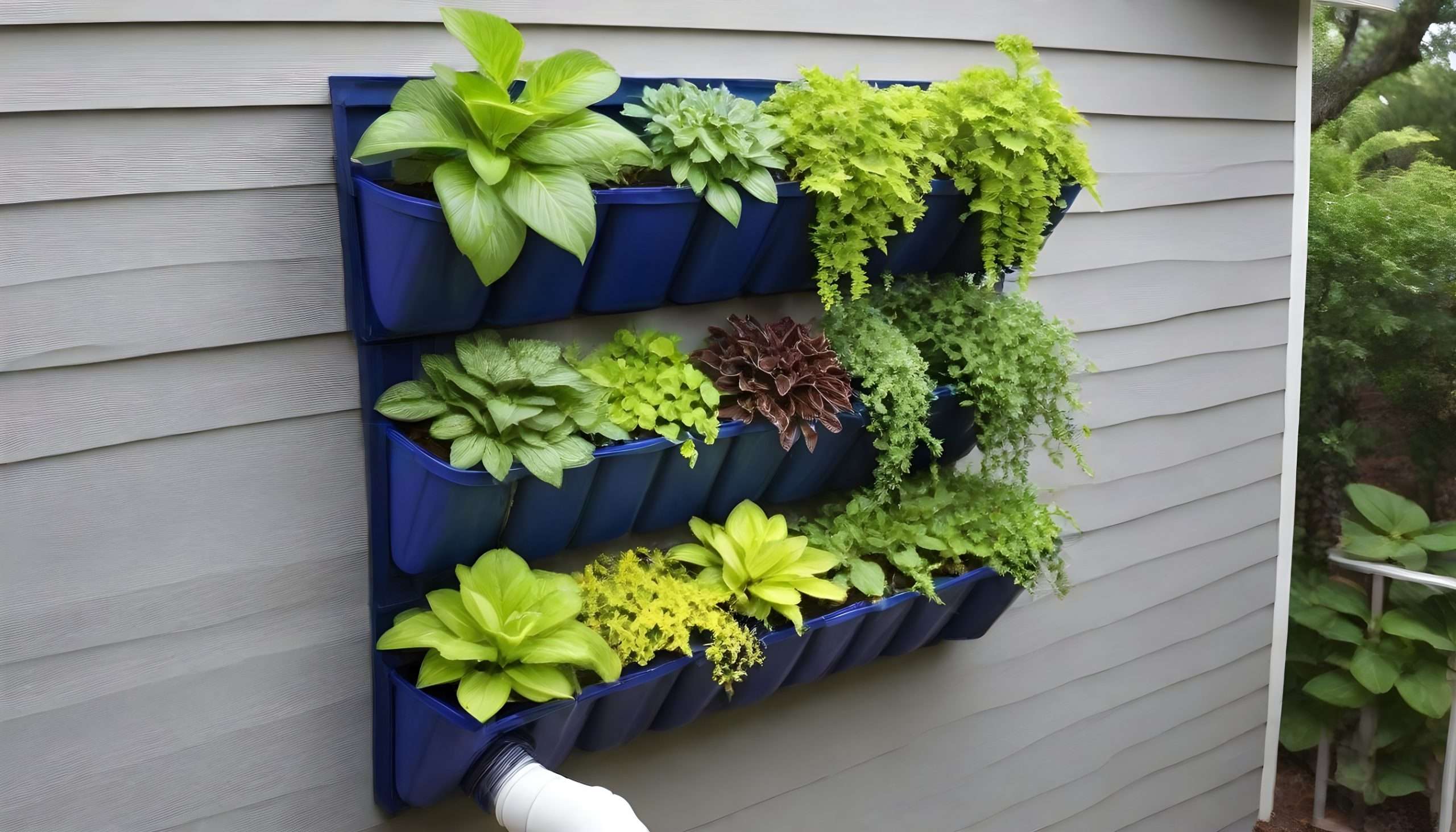
4. Convert Paved Surfaces to Permeable Pavers
If you have areas in your yard that have stormwater runoff are currently paved, such as a patio or a walkway, consider replacing some or all of hard surfaces or the nonporous materials with permeable alternatives.
Permeable pavers allow rainwater to filter into the ground, preventing the development of puddles and reducing the strain on stormwater systems.
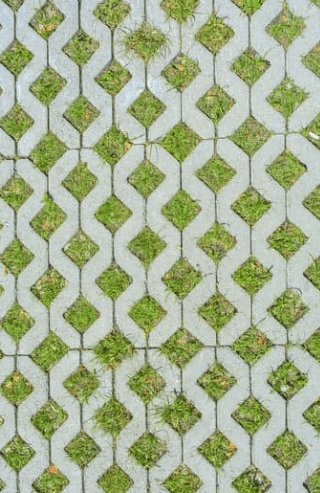
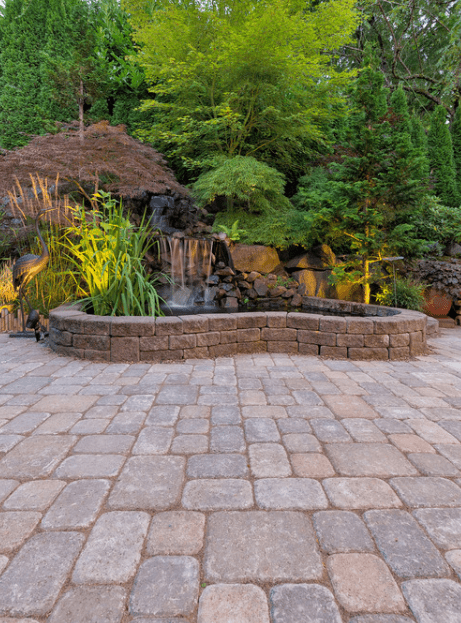
You can find permeable options in a variety of materials and styles, ensuring they’re as visually appealing as they are functional.
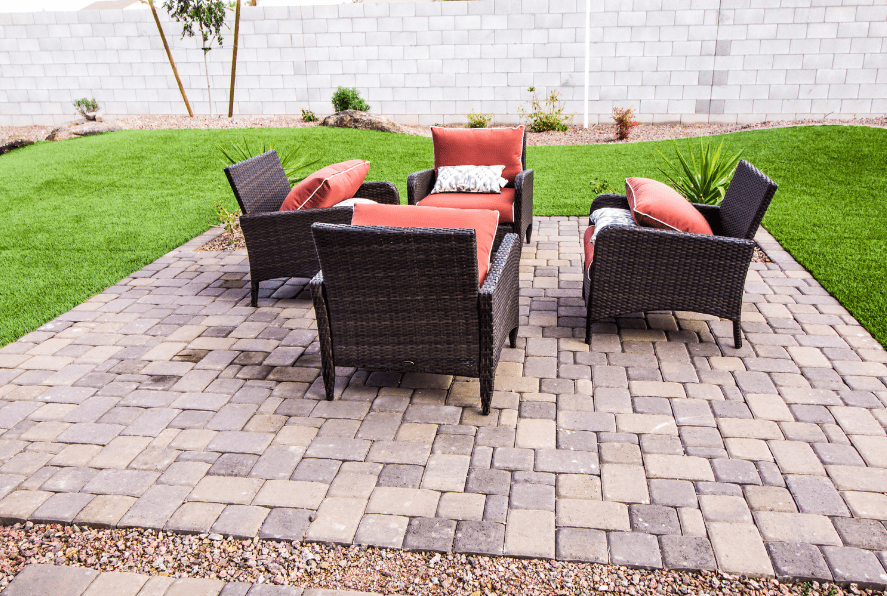
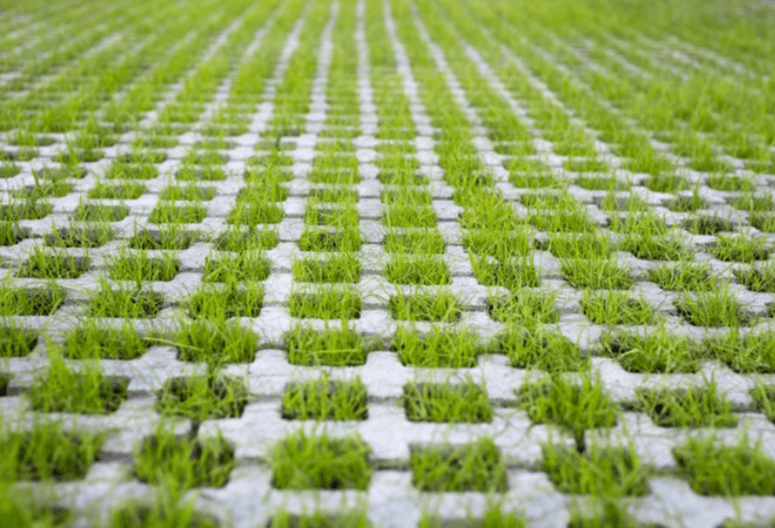
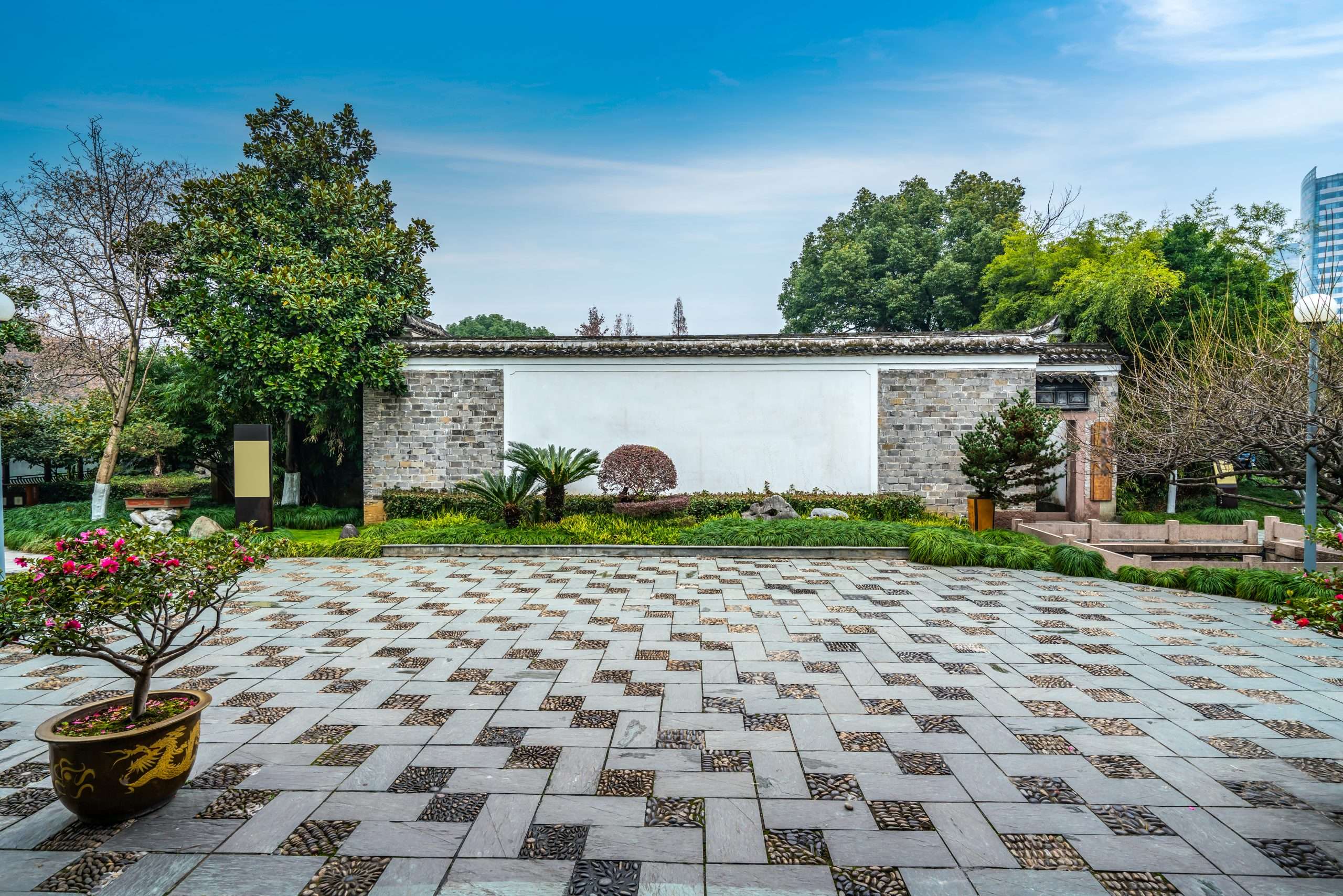
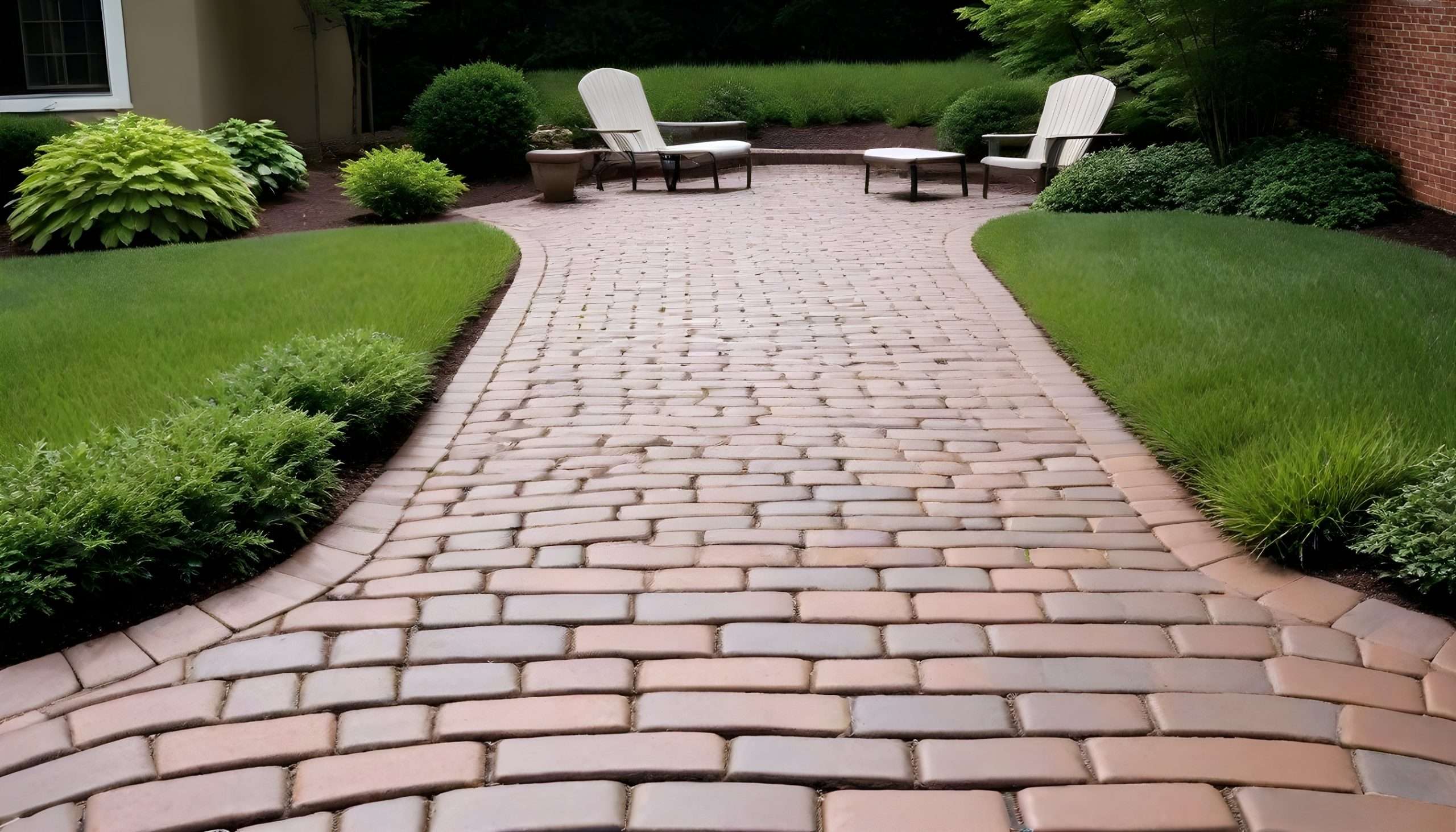
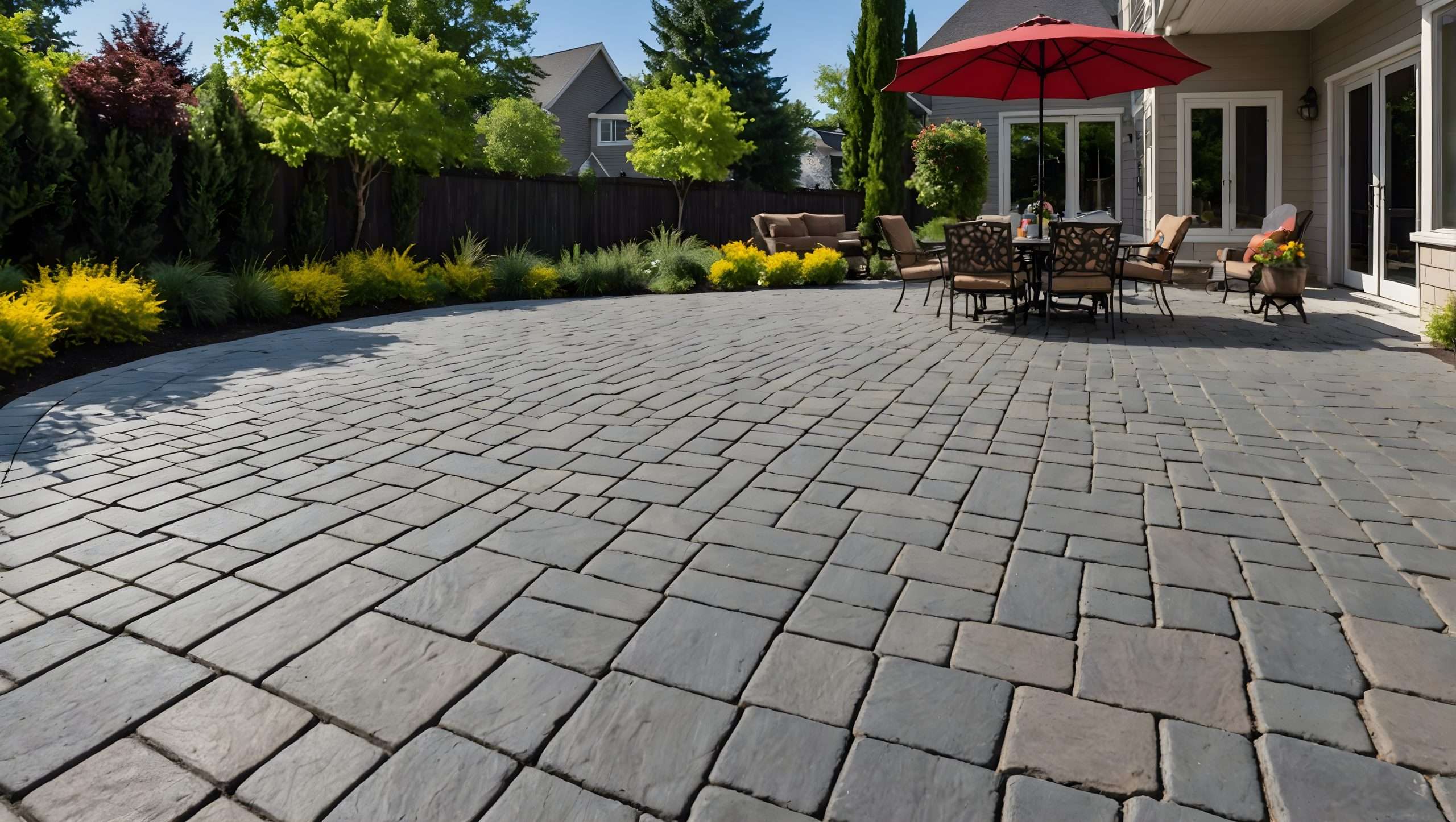
5. Utilize Rain Chains for Aesthetic and Functional Rainwater Collection
Rain chains are a beautiful alternative to traditional downspouts, and they also serve as a makeshift water feature.
The chains guide water downward from your gutters, or storm drains, allowing for a gentle cascade into a gravel bed or a planting area.
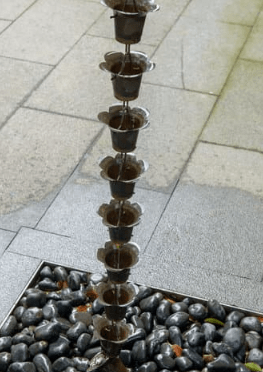
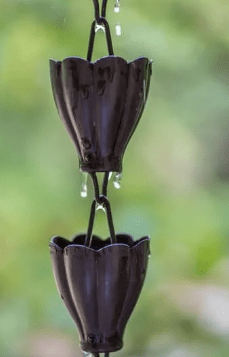
They’re especially effective in spring, when the water can make its way into a downspout planter or rain barrel.
Choose chains made of copper, which not only look elegant but also discourage the growth of algae and bacteria.
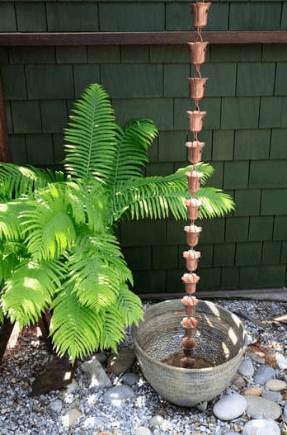
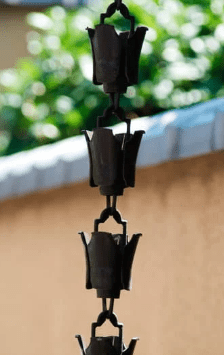
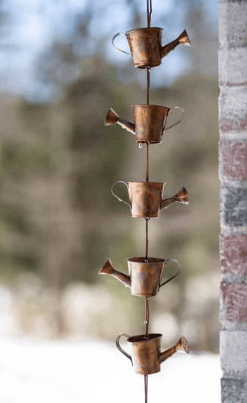
6. Create a Rain Garden that Doubles as a Reservoir
A rain garden is not just a pretty addition to your yard; it’s a strategic water management system.
These gardens are designed to collect and slowly release rainwater, preventing it from carrying pollutants into local waterways below.
When planning your rain garden, consider native plants adapted to handle both wet and dry conditions.
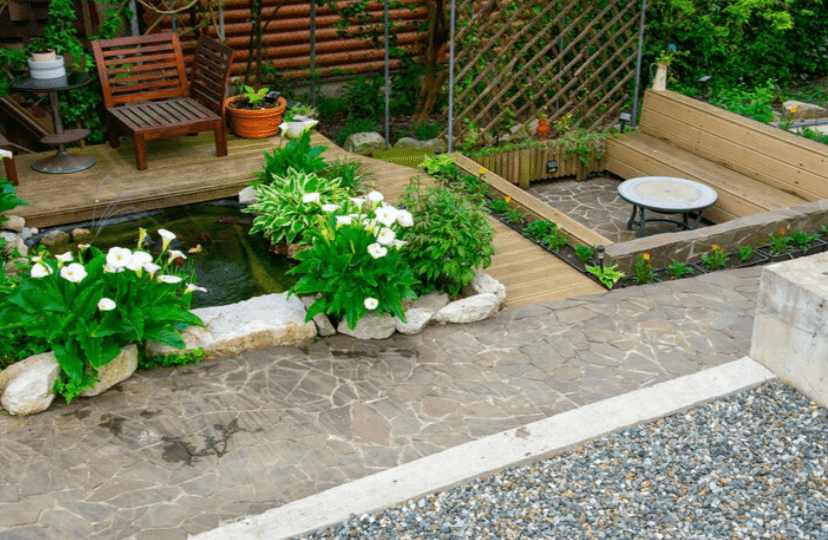
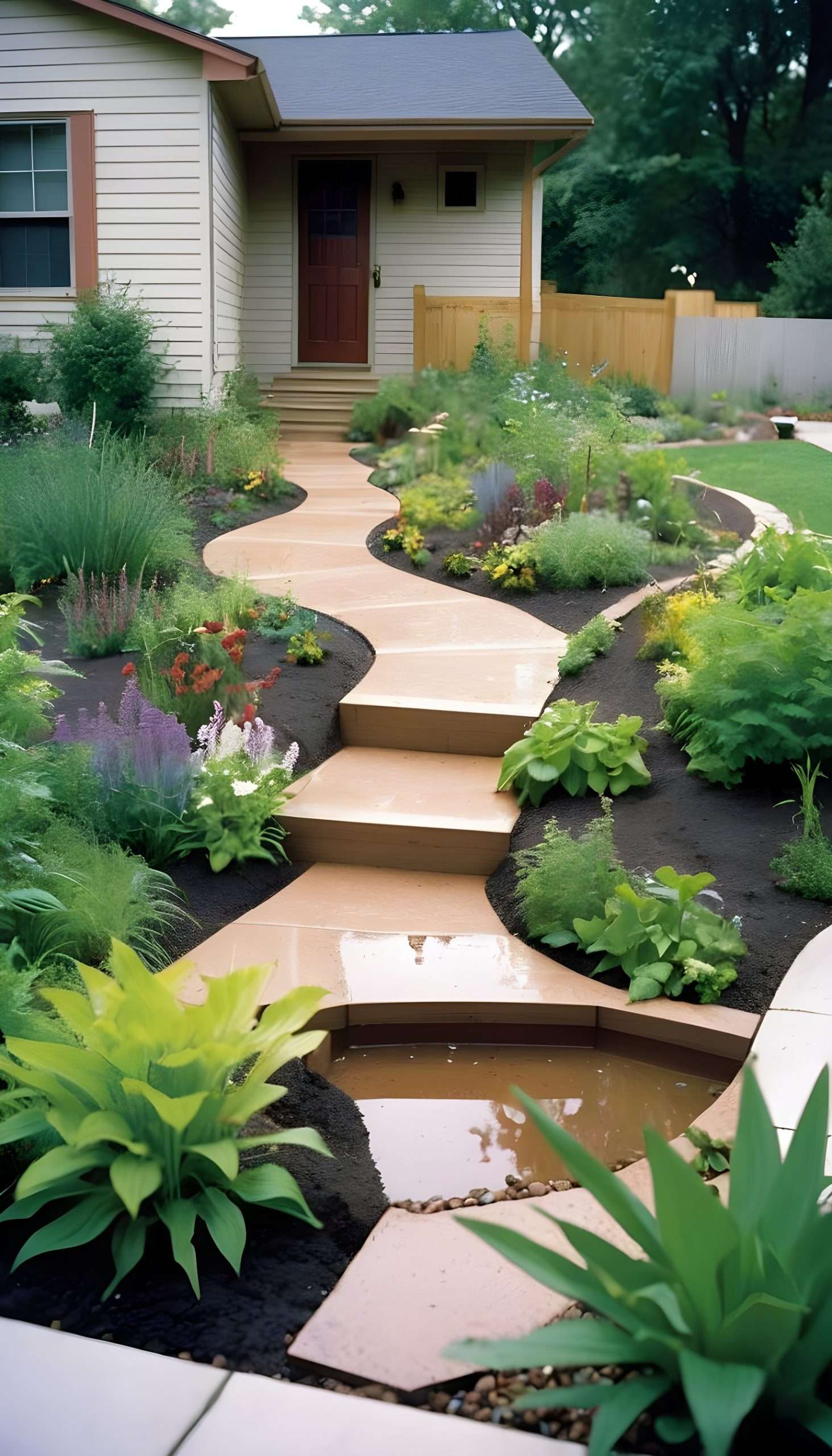
Densely planting with a variety of species can increase water retention and further filter impurities.
Constructing a small berm around your garden will help contain water, creating a natural reservoir for drier days.
7. Plant a Rainforest Garden to Mimic Natural Ecosystems
Rainforest gardens are designed to capture rainwater and support a diverse array of plant species. In your garden, this means layering plants from ground covers to canopy trees, which mimic the natural patterns of a tropical forest.
These layers slow down and reduce rainwater runoff and retain water while enhancing the soil structure and nourishing a wide range of flora.
Select plants that can be found in tropical regions known for their high rainfall and mix in your local species for a personalized, sustainable rainforest.
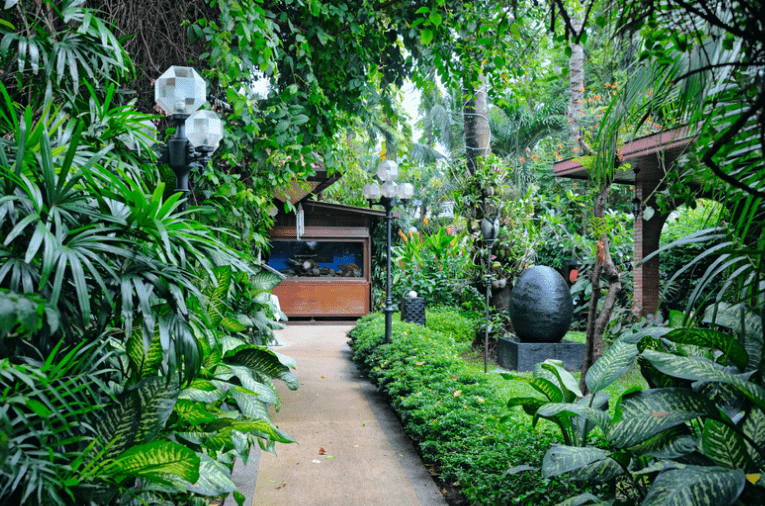
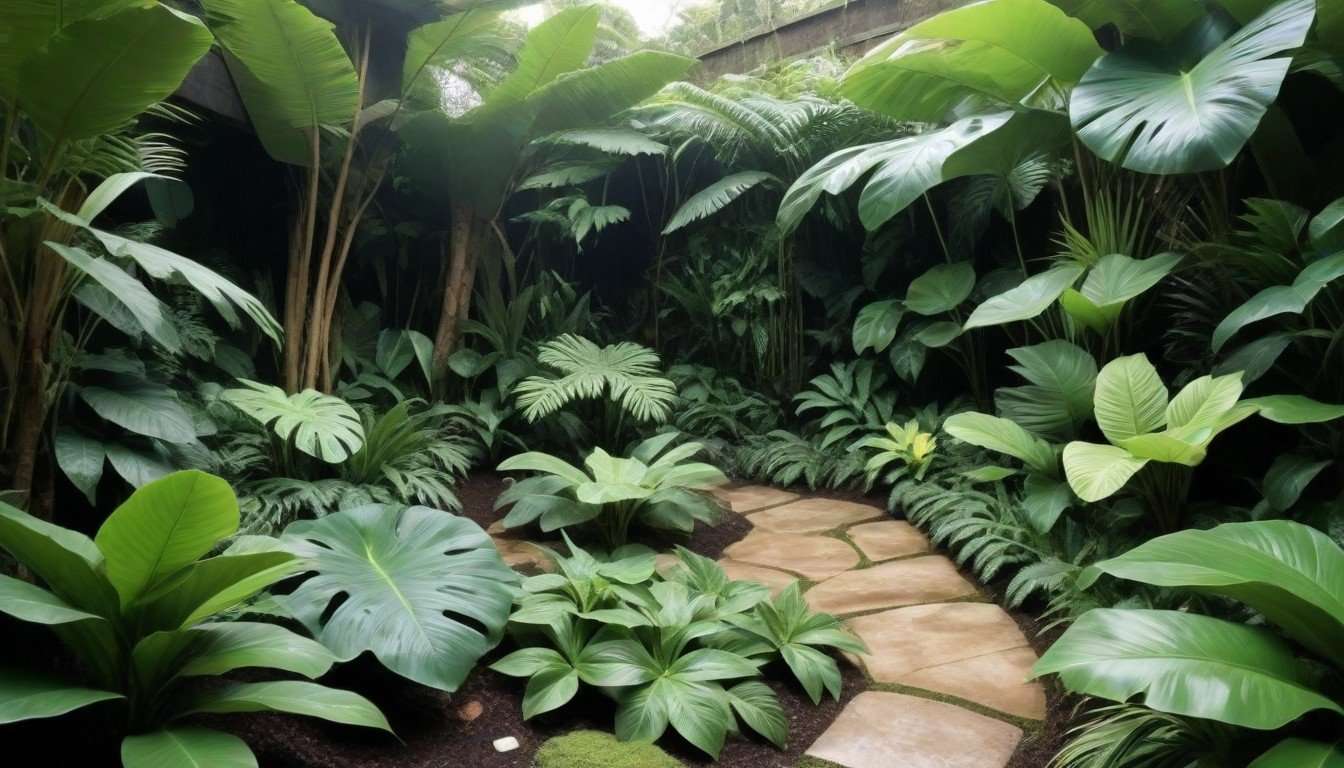
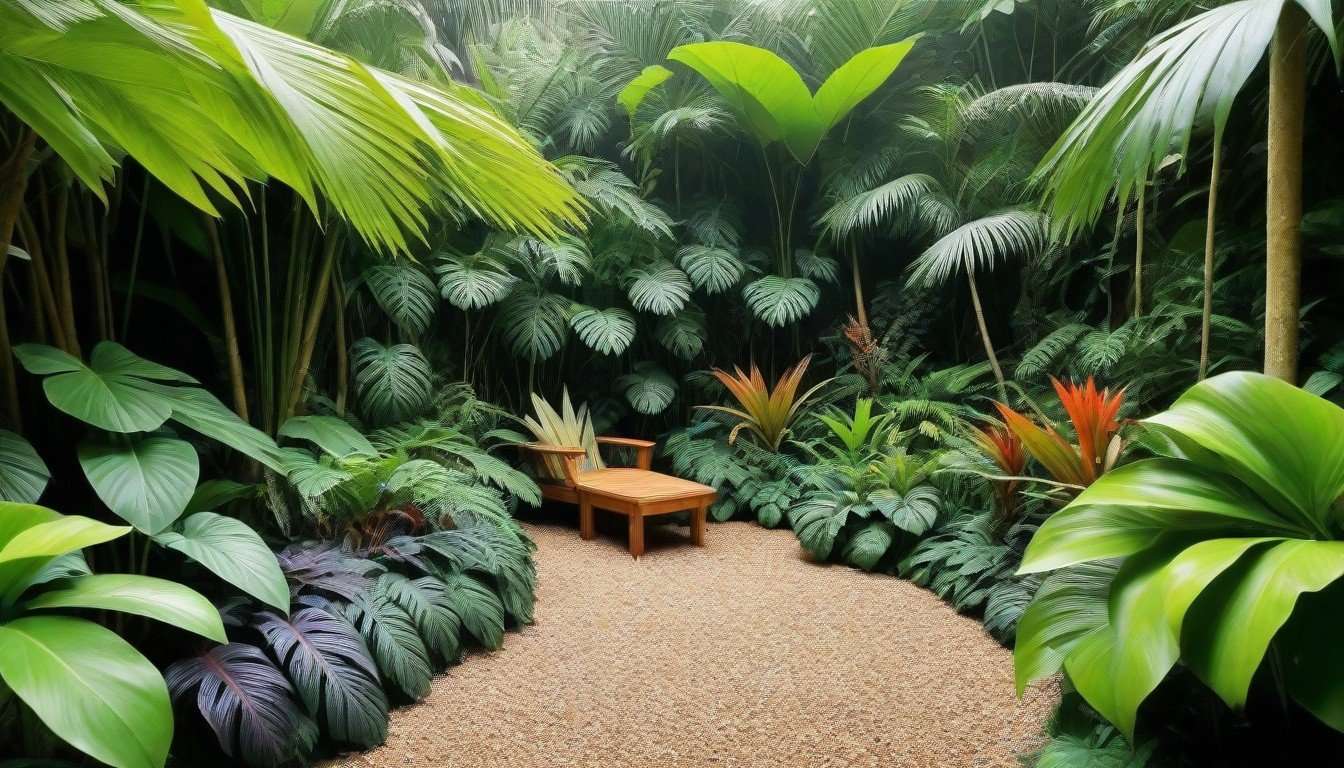
8. Grow a Wetland Area for Biological Water Purification
For those with a little more space and a passion for environmental conservation, consider creating a small wetland or bog area in your garden.
This serves as a natural water filter, removing pollutants and nourishing your plants with nutrient-rich water.
You’ll need a low-lying, consistently wet area, moisture-loving plants, and a mix of sand, gravel, and organic materials to encourage natural filtration.
Such features attract wildlife, improve air and water quality both, and offer a calming oasis within your garden.
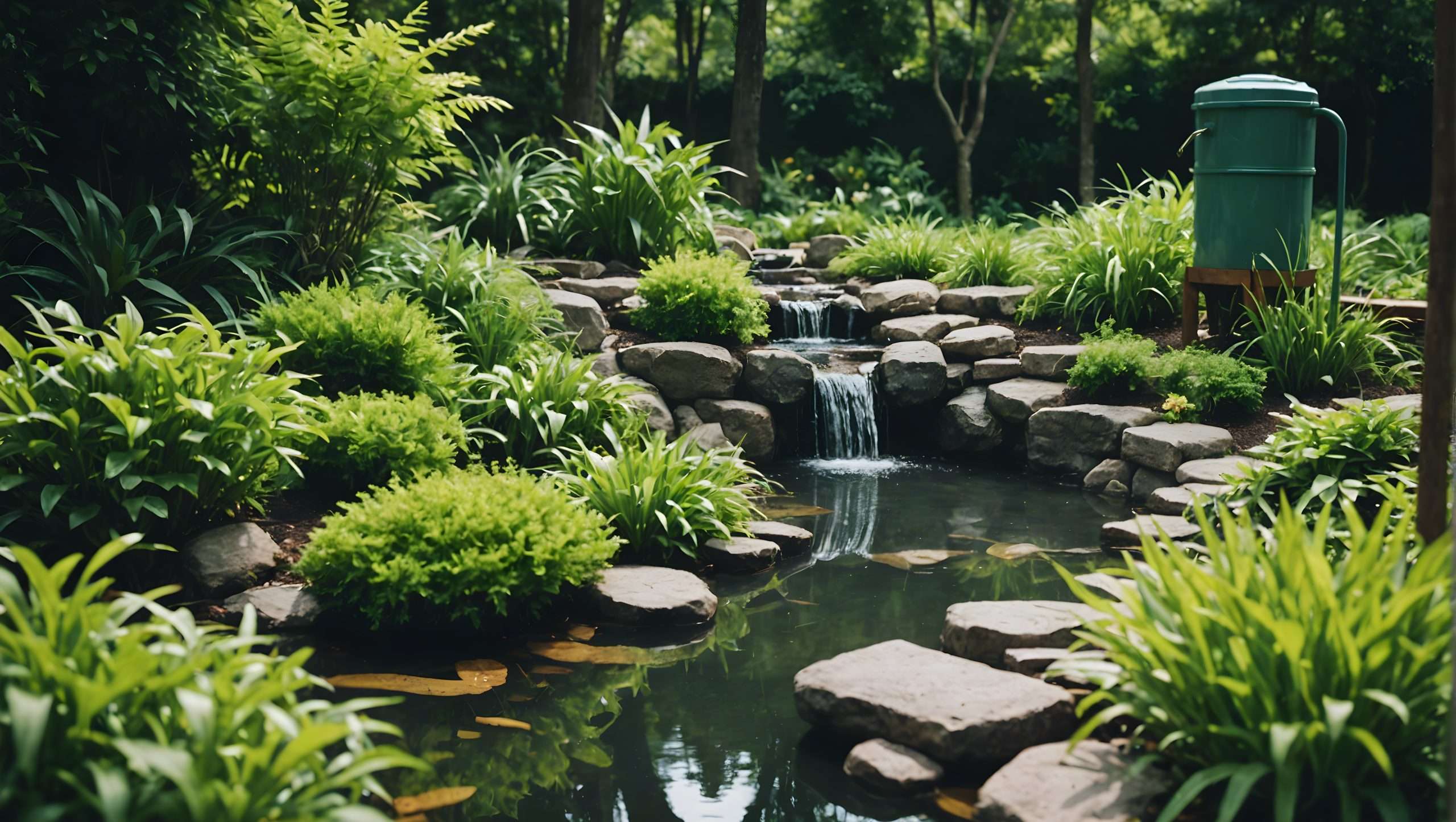
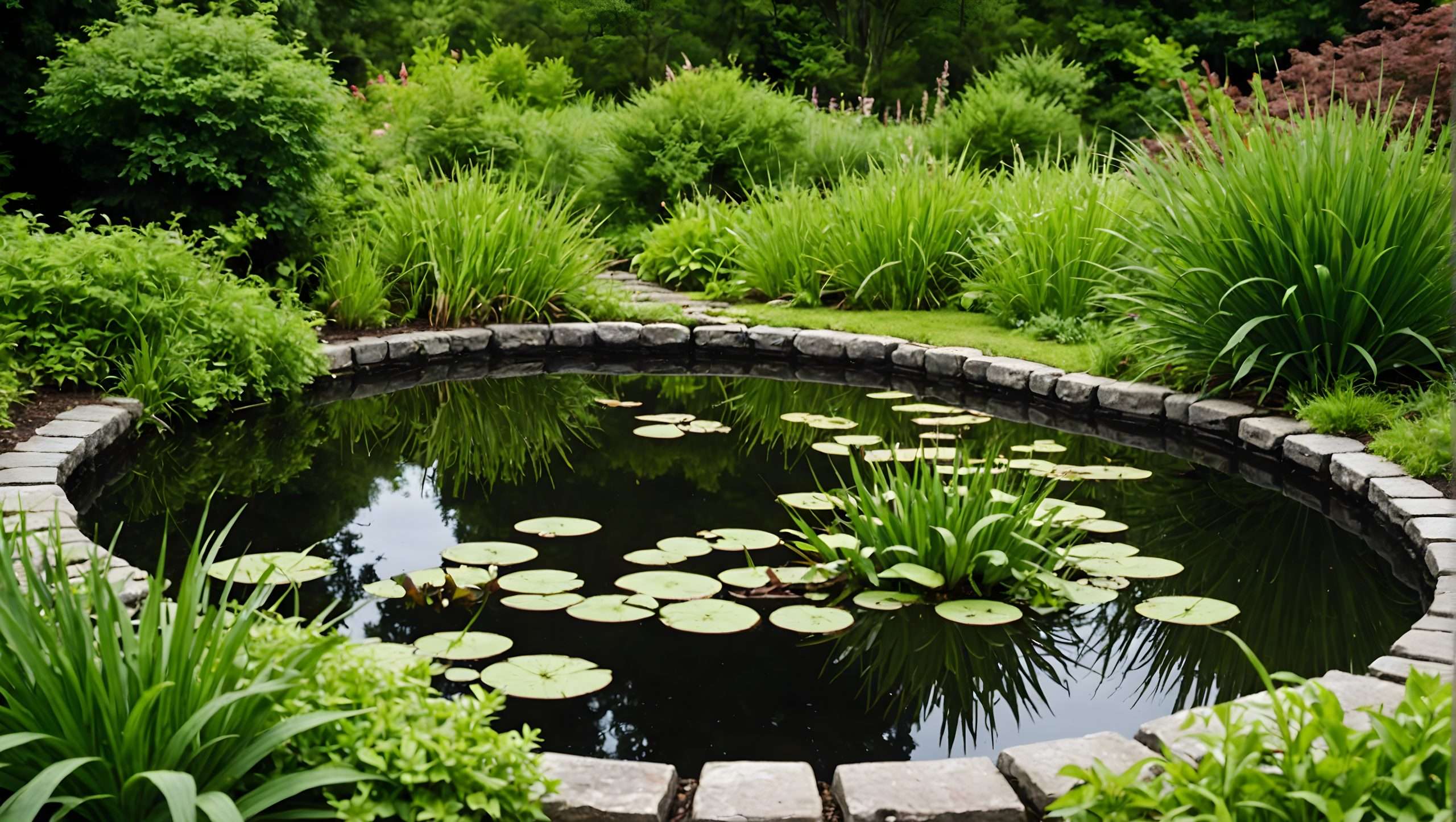
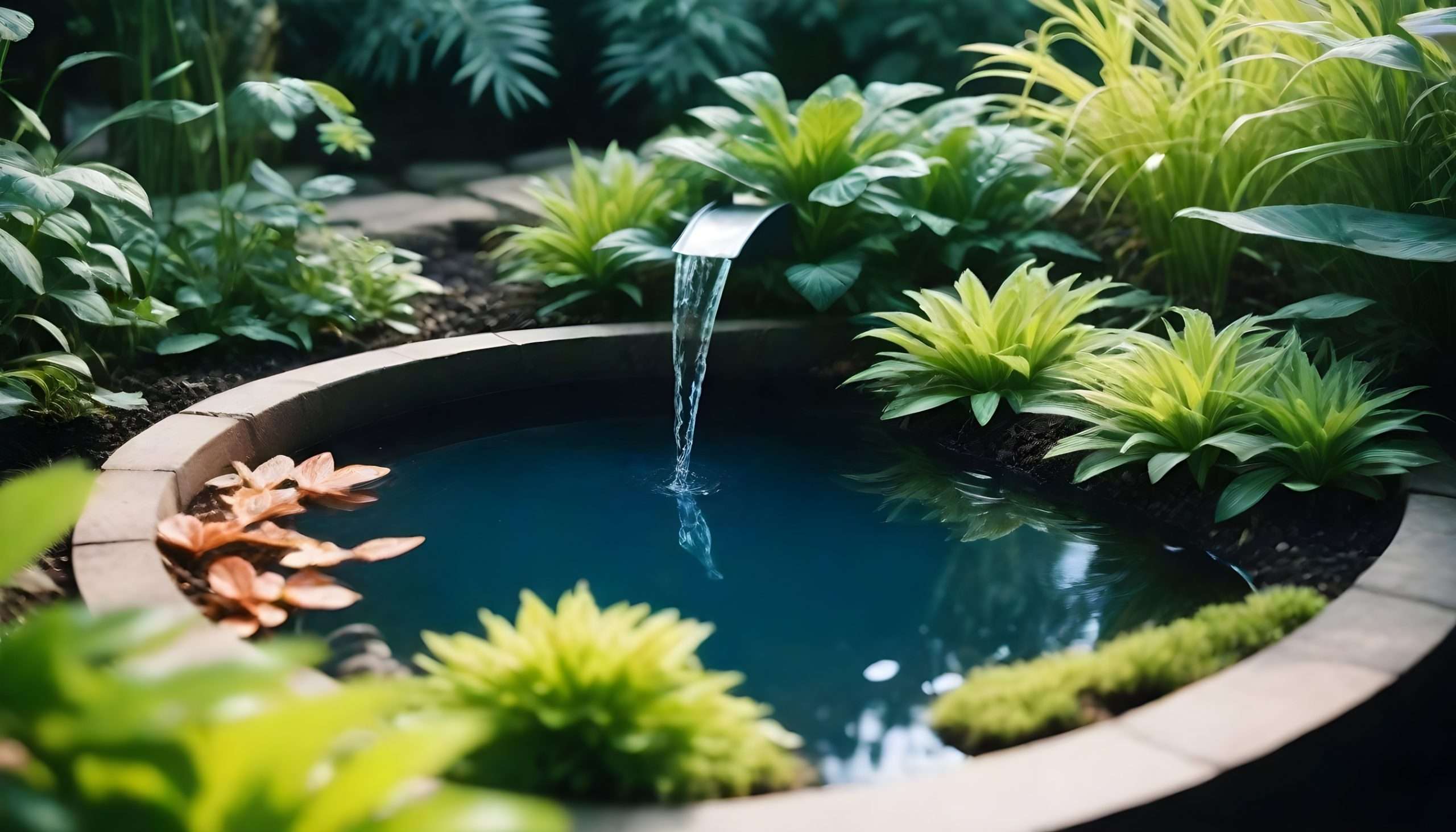
9. Implement a Drought-Tolerant Landscape Design
While it might seem counterintuitive, a key part of rainscaping is preparing your garden to cope with both too much and too little water.
A drought-tolerant garden incorporates plants that can withstand long periods without additional moisture, which is essential for when your sustainable practices are paused during a dry spell.
By selecting plants that have deep roots, succulent leaves, or other water-conserving adaptations, you create a resilient ecosystem that can weather all kinds of conditions.
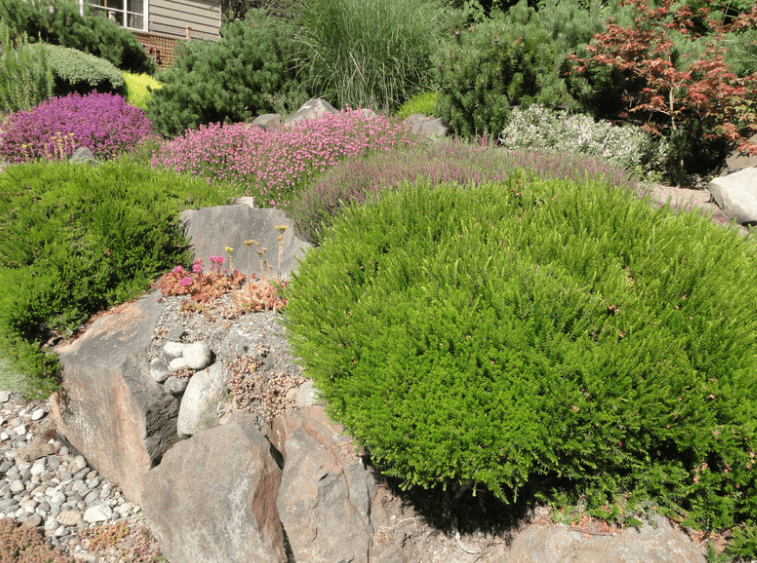
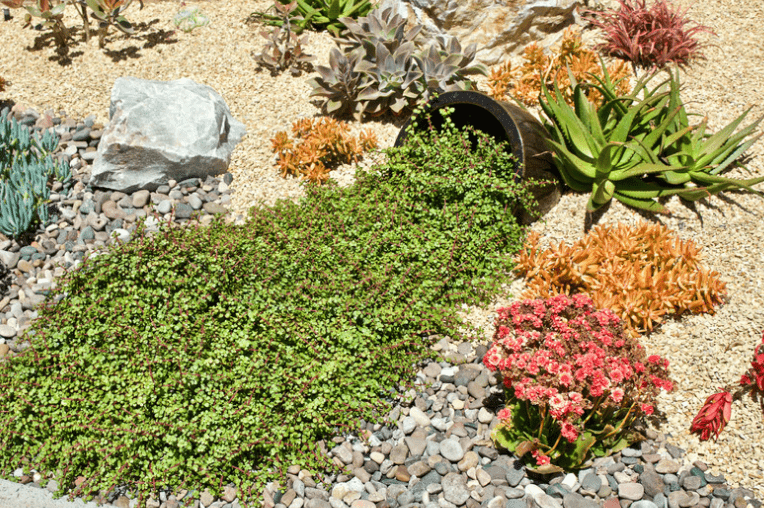
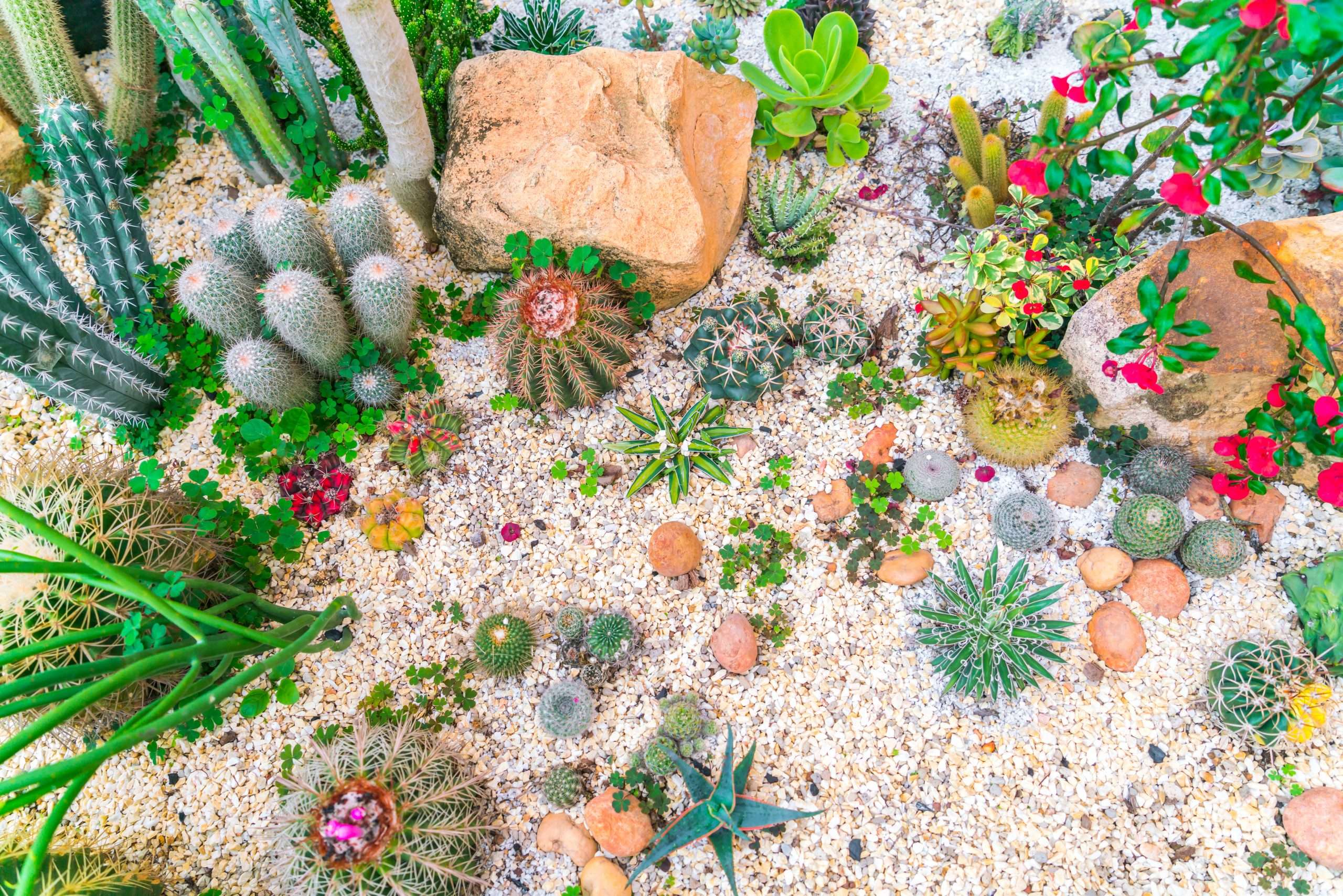
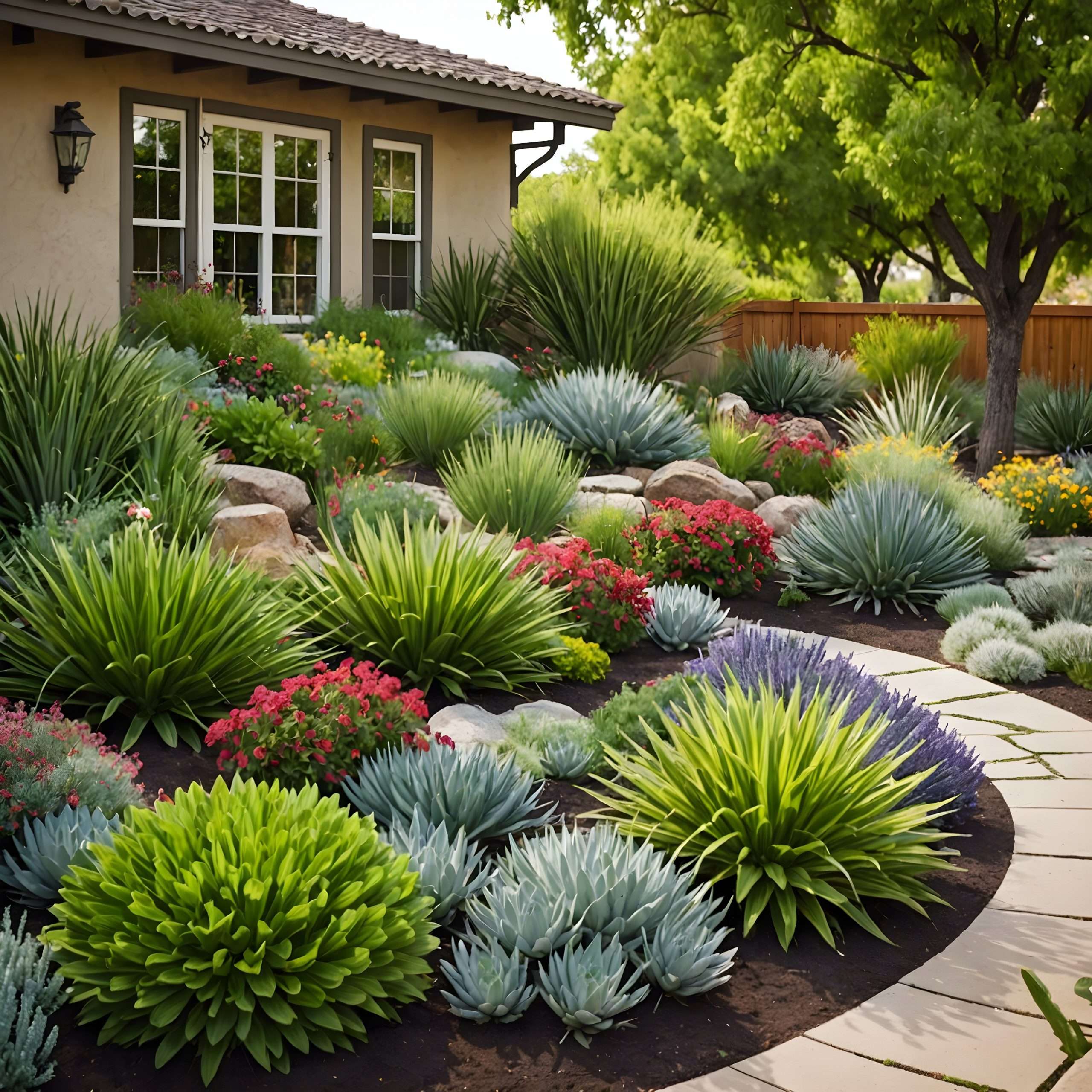
10. Integrate Lawn-Free Landscaping for Water Efficient Design
Traditional lawns require a significant amount of water to keep looking their best, making them less than ideal for sustainable gardens.
By rethinking your approach to landscaping and incorporating more hardscaping, mulching, and alternative ground covers like clover or creeping thyme, you can drastically reduce water consumption.
Not only will you conserve water, but you’ll also create a low-maintenance, diverse habitat that’s welcoming to birds, insects, and small mammals.
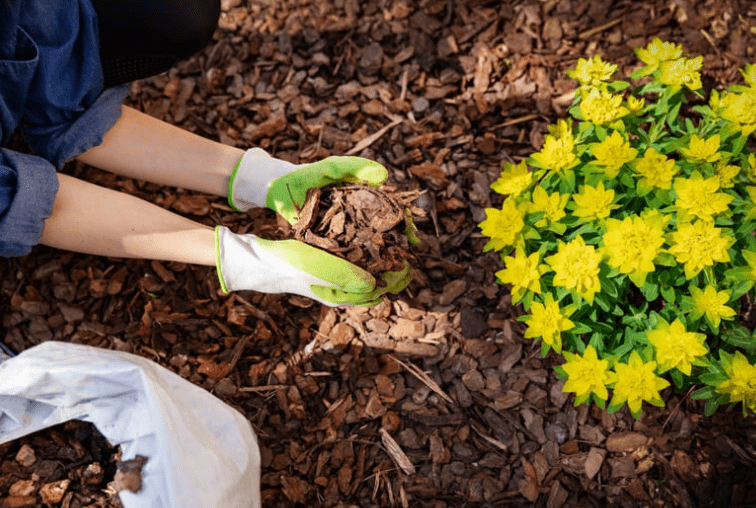
11. Harvest Rainwater for Garden Use
Capturing rainwater using barrels or a cistern system allows you to collect and store water during rainy periods, which can then be used to irrigate your lawn and garden during dry spells.
This not only conserves municipal water but also takes advantage of heavy rain as a free resource, reducing your overall water usage and utility bills.
Additionally, rainwater is often softer than tap water, lacking in salts and chemicals, making it healthier for your plants.
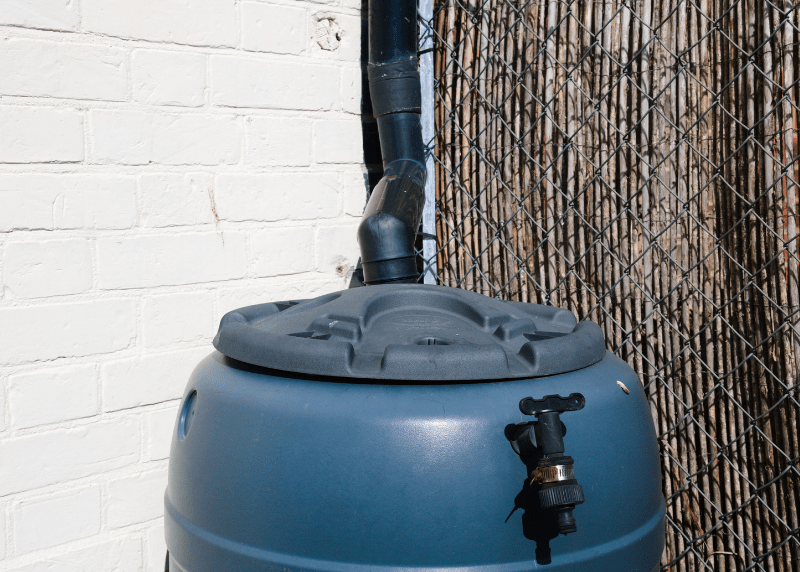
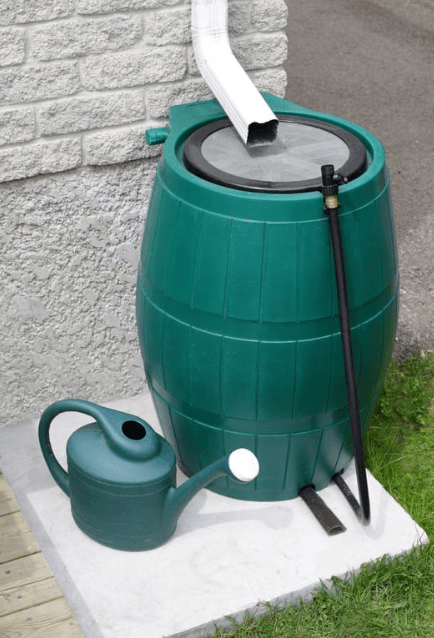
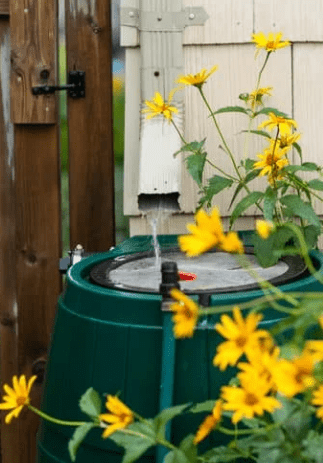
These top 11 rainscaping ideas cover a wide range of approaches to managing water in your garden sustainably.
From the construction of physical systems for supplemental water, like rain gardens and barrel systems, to the selection and arrangement of plants, each idea contributes to a holistic approach to water management.
The goal is to encourage the use of rainwater as efficiently as possible, minimizing waste while enhancing the natural beauty and functionality of your outdoor space.
Whether you’re implementing one or all of these suggestions, each step toward using rainwater runoff and a more sustainable garden benefits not only your home but also the broader environment.

Is Rainscaping a Good Idea?
Rainscaping is an innovative and environmentally friendly approach to landscape design that focuses on using rainwater as a resource instead of treating it as waste or fertilizer. Here are a few reasons why rainscaping is a good idea:
- Reduces water runoff: By absorbing rainwater where it falls, rainscaping reduces the amount of water runoff that can lead to erosion and water pollution.
- Enhances garden health: The techniques used in rainscaping, such as rain gardens and permeable pavements, help to replenish the groundwater supply and provide moisture to plants.
- Promotes biodiversity: Rainscaping can create habitats for various species of birds, insects, and other wildlife, increasing the ecological diversity of an area.
- Saves money: By utilizing rainwater for gardening needs, it can significantly reduce water bills and the need for irrigation.
What Are the Different Types of Rain Gardens?
Components of a Rain Garden
Rain gardens can vary widely in design, but they share common elements that contribute to their effectiveness and beauty:
- Infiltration areas: These are low-lying areas designed to collect and absorb rainwater.
- Native plants: Plants adapted to local conditions are used because they are more tolerant of the garden’s alternating wet and dry conditions.
- Mulch layer: Helps retain moisture, suppress weeds, and add an aesthetic finish to the garden.
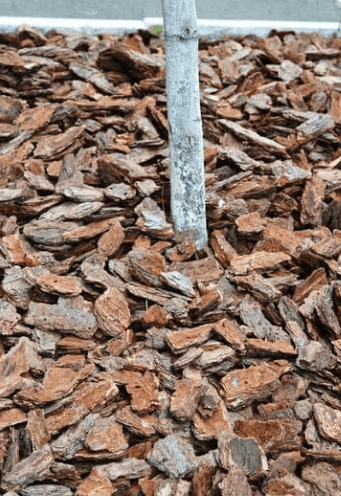
Types
Several specific types of rain gardens include:
- Residential rain gardens: Small-scale gardens designed for individual homes.
- Community rain gardens: Larger installations found in public spaces such as parks or along streets.
- Downspout disconnects: Systems that redirect water from roof gutters into a rain garden or other infiltration areas.
How Do You Make a Rainscape?
Steps to Creating a Rainscape
- Assess your site: Identify where rainwater collects or flows in your landscape.
- Choose a location: Based on your assessment, select the most suitable spot for your rain garden or other rainscaping feature.
- Design your rainscape: Plan the size, shape, and which plants to use based on your location’s specific conditions.
- Prepare the site: Excavate if necessary, amend the soil, and ensure proper grading for water infiltration.
- Plant and mulch: Plant your chosen native plants and cover the area with mulch to help retain moisture and discourage weeds.
What Goes at the Bottom of a Rain Garden?
The bottom of a rain garden typically consists of:
- A gravel or rock layer: This facilitates drainage and prevents the soil from compacting.
- A layer of sand: Enhances filtration and supports plant root growth.
- Rich, organic soil on top: Provides a medium for plants to thrive and further filters rainwater.
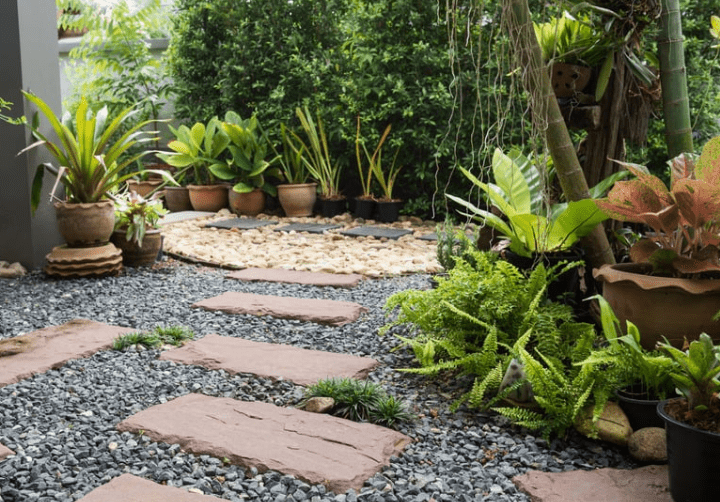
How Deep Should a Rain Garden Be?
The depth of the soil drains a rain garden can vary depending on its size and the absorption rate of the soil, but a general guideline is:
18 to 24 inches (45 to 60 cm) deep. This depth is sufficient for most residential rain gardens to function effectively, allowing for adequate water infiltration.
What Do You Fill a Rain Garden With?
A rain garden should be filled with:
- A mix of sand, compost, and topsoil: This blend provides both drainage and nutrient-rich soil for plants.
- Native plants: Choose species that are adapted to both wet and dry conditions.
- Mulch: Apply a layer of mulch to help retain soil moisture, reduce weed growth, and add an aesthetic finish.

